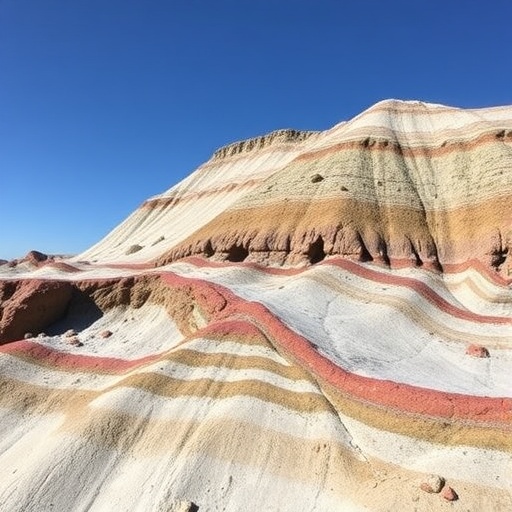Groundbreaking Insights into Seismic Behavior of Weathered Rock Slopes Unveiled by Shaking Table Studies
In a significant advance for earthquake engineering and geology, recent experimental research has elucidated the complex seismic responses of rock slopes possessing surface weathering layers. This innovative work, conducted through precise shaking table tests, shines a light on how the degradation of surface rocks, long subjected to natural weathering processes, critically influences the dynamic behavior of slopes under seismic excitation. Such understanding is essential to improving risk assessments and safeguarding mountainous regions prone to earthquakes.
Rock slopes form substantial parts of our planet’s landscape and infrastructure, often supporting critical transportation routes, dams, and human settlements. Unlike intact rock masses, real-world slopes exhibit varying degrees of surface weathering—an alteration induced by chemical, physical, and biological processes that weaken the outermost rock layers. Despite the ubiquity of weathering, its direct impact on seismic response has remained elusive, complicating efforts to predict landslides and slope failures during earthquakes.
By leveraging laboratory shaking tables, which simulate ground motions experienced during seismic events, researchers created scale models of rock slopes with controlled weathered layers atop more intact rock substrates. These models underwent precisely calibrated vibrations reproducing different earthquake intensities. High-resolution sensors recorded displacement, acceleration, and strain patterns throughout the slope structures, enabling an unprecedented capture of slope dynamics under controlled yet realistic seismic forces.
The results confirm that weathered surface layers significantly alter seismic wave propagation and response within slopes. Unlike the more rigid intact rock, weathered materials exhibit reduced stiffness and increased damping properties, acting as a seismic filter that modulates the amplitude and frequency content transmitted deeper into the rock mass. This filtering effect changes the energy distribution and deformation within the slope, leading to distinct dynamic behaviors compared to non-weathered counterparts.
One striking observation is the amplification of slope deformation at specific shaking frequencies linked to resonance phenomena dictated by the weathering layer thickness and mechanical properties. This resonance effect can induce unexpectedly large displacements, elevating the risk of slope instability. Such frequency-dependent responses underscore the importance of characterizing weathering-related parameters when modeling slope seismicity.
Additionally, the experiments revealed that the weathering layer contributes to localized strain concentration and shear zones near the slope surface. These zones represent potential failure points where initial cracking and damage accumulate during seismic shaking. The progressive degradation of this surface layer can propagate cracks downwards, ultimately compromising the global stability of the slope. Such mechanisms had been hypothesized but remain seldom demonstrated until now.
Beyond mechanical insights, the research offers valuable data for refining numerical models that integrate weathered layer effects. Traditional seismic slope models often simplify or ignore surface degradation, potentially underestimating seismic hazards. Incorporating experimentally validated parameters from this study can improve the fidelity and reliability of slope failure predictions within diverse seismic scenarios.
The study also emphasizes the heterogeneity of weathered materials, which may vary in thickness, degree of cohesion, and moisture content—factors that further complicate seismic response patterns. Future work expanding experimental scope and incorporating in-situ field tests can bridge the gap between idealized models and complex natural systems, enhancing regional seismic risk mitigation strategies.
Importantly, these insights bear implications not only for natural slopes but also engineered rock cuttings and embankments that undergo weathering over time. Understanding how seismic forces interact with evolving surface conditions empowers engineers to design more resilient infrastructure foundations and slope stabilization measures tailored to site-specific conditions.
This experimental endeavor complements existing theoretical frameworks by providing crucial empirical evidence quantifying the role of weathered layers in shaping seismic slope dynamics. It offers a tangible pathway toward integrating multidisciplinary approaches—from field geology and material science to structural engineering—aimed at comprehensively addressing earthquake-induced slope hazards.
As earthquake events continue threatening mountainous regions worldwide, pioneering research such as this underlines the urgency of refining hazard models that capture the nuanced interplay between geological degradation and seismic forces. The knowledge gained through shaking table studies can translate directly into more precise early-warning systems and informed emergency preparedness policies protecting vulnerable communities.
In summary, the study represents a paradigm shift in our understanding of seismic wave interactions within weathered rock slopes, highlighting the dominant influence of surface alteration layers on dynamic slope responses. Its findings beckon the scientific and engineering communities to reconsider assumptions, embrace complexity, and prioritize interdisciplinary research to confront seismic slope hazards with greater accuracy and confidence.
The comprehensive data produced by these shaking table tests provide a benchmark for future research and open new avenues for exploring seismic resilience in geologically diverse terrains. As the climate and anthropogenic activity continue to modify weathering processes, ongoing vigilance will be required to assess evolving seismic vulnerabilities of slopes.
Ultimately, this groundbreaking research not only expands the frontier of seismic geotechnical science but also holds the promise of tangible societal benefits through improved disaster risk reduction and sustainable land use planning in earthquake-prone, mountainous regions around the globe.
Subject of Research: Surface weathering layer effects on the seismic response of rock slopes
Article Title: Surface weathering layer effects on the seismic response of rock slopes by shaking table tests
Article References:
Liu, H., Luo, Y., Wang, W. et al. Surface weathering layer effects on the seismic response of rock slopes by shaking table tests. Environ Earth Sci 84, 638 (2025). https://doi.org/10.1007/s12665-025-12666-7
Image Credits: AI Generated




